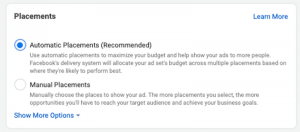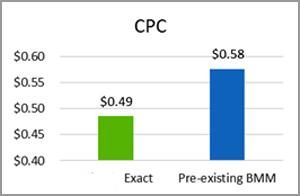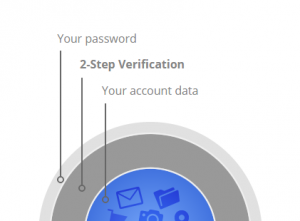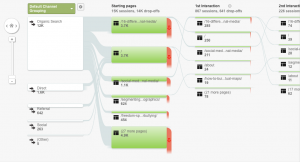There have been too many articles, white papers, and case studies written on the “death of the annual performance review.” But when you brush past the hyperbole, you find a diverse list of successful companies changing the way they measure employees.
Surprisingly, it’s not just the Googles, Zappos, or *insert trendy startup name* who are changing. Decades-old, massive companies from diverse industries are ending their annual performance reviews. Companies like Accenture, Adobe, Deloitte, IBM, GE, Gap, Goldman Sachs, Microsoft, and Netflix are among the most well-known names.
The “death of the annual performance review” could not be a hot topic for bloggers, thinkers, and influencers without being paired with a silver bullet solution. Every blog post and tweet promises a panacea for your annual review induced woes. Real-time feedback programs are one of the most popular recommendations.
Maybe your company is considering implementing a real-time feedback program to shift culture – but changing a culture is not easy.
Technology from a new vendor or a home-grown program is only one piece of many to successfully change your organization. Change management is a big, hard problem to solve.
Lasting cultural changes don’t happen until employee mindsets catch up to the tools and programs they are equipped with. Without actions and attitudes regularly reinforcing thoughtful feedback at every organizational level, new programs will struggle to gain traction.
If you don’t change thoughtfully, engagement and participation in new programs will drop off, and your team ends worse off than they started. Employees still aren’t receiving frequent feedback, and without annual reviews, there is less clarity on where they stand relative to peers.
Thoughtful managers can be a powerful catalyst for mindset changes.
Changing a culture requires many steps, and to build a culture of real-time, thoughtful feedback, there’s an underutilized weapon: the manager-employee one on one.
This weekly (you’re doing them weekly right?) meeting is the best place to start living a culture of real-time feedback and constant improvement, but is often misused, underutilized, or not used at all.
I wrote this article both to reflect on my experiences and scratch an itch. When I started having one on ones for the first time as a manager, I felt blindsided. I had no idea how to make these meetings valuable for myself and my colleagues.
I never thought having a meeting would be a challenge. After all, I’ve been in so many (read: too many).
First things first – these meetings are hard (for both participants!).
Even with the best preparation and practice, there are bound to be times when you don’t feel the benefit, or get across the desired message. Employees don’t know what they can share, the meeting is lost to work time, and manager feedback can feel vague or detached.
By no means have I perfected this process, but in my goal to improve my own one on ones, I’ve gathered some useful ideas that could help you improve yours.
1. Setting a Topic
(Alternate Between Medium Term and Long Term Discussions)

Meeting weekly is important, but chatting about the same topics each week can lead to stale and repetitive conversations.
One way to keep discussion fresh is to alternate topics weekly between the “medium term” – progress on projects and initiatives the employee is involved in, and “long term” – progress towards career goals, learning and development, and responsibility growth.
For the most part, I’ve found it useful to limit tactical, “short-term” discussions to informal chats and project meetings, excluding these topics from one on ones.
2. Preparation
Set An Agenda (just in case!)
Many one on ones don’t go according to agenda, and there’s nothing wrong with that.
One on ones should be designed as an opportunity to discuss anything on an employee’s mind detached from tactical day to day workflows. These discussions often don’t need much encouragement, but taking time to prepare thoughtful questions and discussion topics to reflect on is better than stumbling through non-sequiturs, or staring at each other silently for thirty minutes when neither person has anything to say.
3. Technology
No Unnecessary Laptops or Phones

This is one I could do better at.
Despite our self-delusions, it’s impossible to have a thoughtful in-person conversation while looking at your phone or the 25 browser tabs you have open. The best conversations don’t need reference materials or notes, so ditch the tech when you can.
One useful way to force this is to do one on ones seated outside or on a walk. As an added bonus, leaving the office on busy days can help free up headspace for better introspection and conversation.
4. Consistency
Busy? Don’t skip, reschedule.

Things happen, and inflexible schedules don’t jive with fast-paced environments. If either person is too busy to thoughtfully engage for the time allocated for the one on one, just reschedule.
A late conversation is better than an unfocused or cancelled one.
5. Feedback
Tie Specific Tactical Feedback from the week to Overarching Principles.
Throughout the week, you may offer directive feedback in real-time, revising and rethinking work.
In real-time, it can be difficult to dig deeply into your feedback’s central principles. Employees can only grow so much with surface level feedback – ultimately, they need to understand the themes and processes leading to the feedback they’re receiving.
Using the one on one as an opportunity to reinforce overarching themes and principles is an important way to help employees grow and anticipate future feedback.
6. Listening

Don’t just give feedback. Ask for it – for yourself, your product, and your company.
One sure way to make people unhappy at work is to deny them a chance to give their take on what could be better. This feedback can cover your management, to product features, and even to the overall company strategy.
While your company should be encouraging feedback from all employees through surveys and focus groups, don’t wait for them – do it yourself.
One easy way managers can help is by encouraging feedback during one on ones, both specifically for the employee (i.e. “What can we do to support you in your role more?”) and for more general company level insights (i.e., “What opportunities are we missing out on?”).
Now we want to know – what’s worked for you?
These are some strategies that have worked well for me, but by no means is this an exhaustive list. What makes your one on ones work?
Business & Finance Articles on Business 2 Community
(77)









